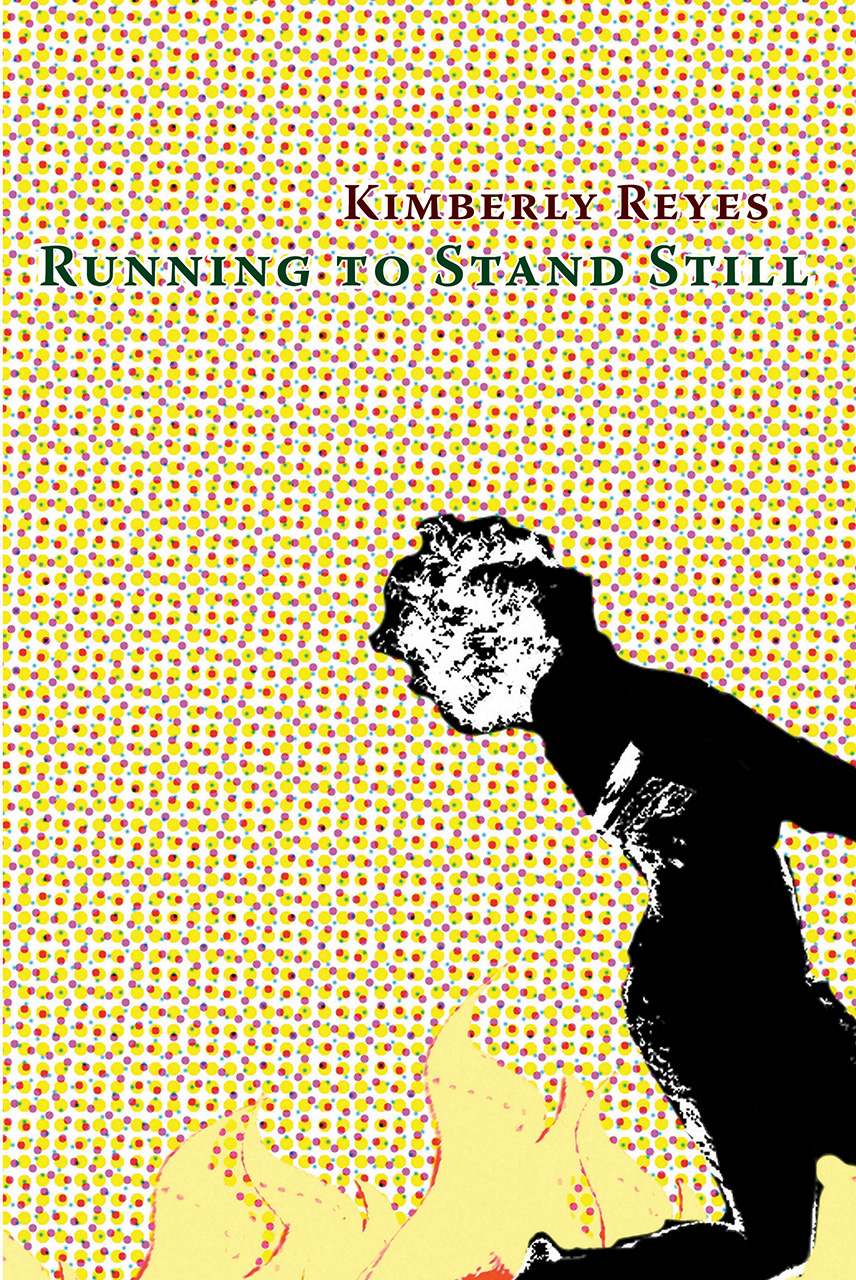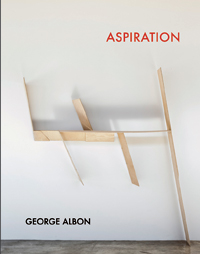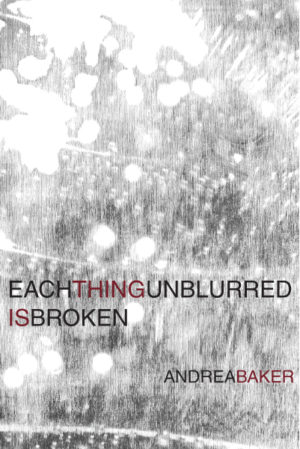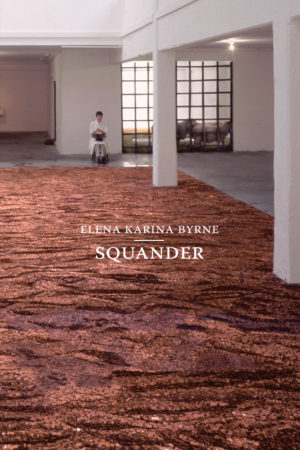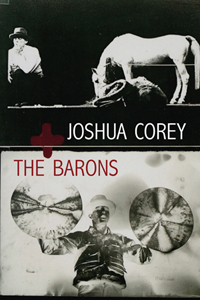Description
Histories, stories, lyrics, aspirations, dreams, pressures, and images are spun into a musical tale through a site of convergence: the Black female body. Swarmed by external gazes and narratives, the inhabitant of this body uses her power to turn down this cacophony of noise and compose a symphonic space for herself. By breaching boundaries of racism, sexism, sizeism, colorism, and colonialism, these poems investigate the memories and realities of existing as Black in America. Building from poetic, journalistic, and musical histories, poet and essayist Kimberly Reyes constructs a complex and fantastic narrative in which she negotiates a path to claim her own power.
These poems teem with life, a life rich with many selves and many histories that populate in the voice of Reyes’s poetic narrator. They sway between negotiations of hypervisibility and erasure, the inevitable and the chosen, and the perceived and the constructed. Reyes’s poems offer sharp observations and lyrical movement to guide us in a ballad of reconciliation and becoming.
Examining the Black female body through histories and stories, Reyes offers a lyric of restless music. Her preoccupation with the gaze of others and storytelling extends beyond boundaries, creating a layered narrative of power and self.
While reading Reyes’s profoundly affecting words, I saw myself as the you of this moment, of this book. I am compelled to help in carrying the baggage, this weight. I am grateful for having had the experience of moving through this labyrinth of consciousness. This is the important and necessary work of Running to Stand Still.
Truong Tran, co-author of 100 Words
These poems, with through lines of gender, race, adventure, desire, build into a deeply moving provocation of loss and discovery. The brilliance of these poems is their achievement of discomfit as they simultaneously travel distance and move inward. . . . The title of this collection is a promise: how poetry can at once run and stand still, and why that matters.
Valerie Wallis, author of House of McQueen
Pinballing between family lore, social media, and pop culture discourse, Reyes deconstructs the casual discourses of contempt her narrators are invited to embrace outside and within blood lines, however much ‘birthright belonging / is the maim.’ And yet, betrayed by the human desire to belong (‘To be kept is to / be kept, and what you wanted’), they—she—never quite reach escape velocity: Running to Stand Still is thus the poignant record of an orbit, both victory and impasse.
Tyrone Williams, author of As iZ
In Running to Stand Still Kimberly Reyes excavates the many forces that shape(d) her speaker’s black girl-to-womanhood. Several decades of pop lyrics bookend sections of vivid poems that combine matrilineal history with fully self-aware, contemporary survivalism. . . . Don’t be fooled by her assertion that ‘my narration is jerky, / preemptive, unreliable’ – this is about as straight-talking a collection as you’re likely to read this year.
Irène Mathieu, MD, author of orogeny and Grand Marronage
Rich in literary and pop culture references, the voice of Running to Stand Still is both specific and wide-ranging. Quotations from artists as disparate as Frank Bidart and The Killers splice and introduce poems…Through this juxtaposing of different forms and language, Reyes weaves a deeply intimate portrait out of impossibly expansive themes: modern life, Black womanhood, family history, and technology.
Reviews
About the Author
Interviews
Kimberly Reyes has received fellowships from the Poetry Foundation, the Academy of American Poets, CantoMundo, Callaloo, the Department of Culture, Heritage and the Gaeltacht in Ireland, the Munster Literature Centre, the Prague Summer Program for Writers, Summer Literary Seminars in Kenya, Community of Writers at Squaw Valley, Columbia University, San Francisco State University, and other places. She’s written nonfiction for The Atlantic, The New York Times, The Associated Press, Entertainment Weekly, Time.com, The New York Post, The Village Voice, Alternative Press, ESPN the Magazine, Film Ireland, The Irish Examiner, The Echo Newspaper, RTÉ Radio, NY1 News, Medium, Entropy, The Irish Journal of American Studies, and The Best American Poetry blog, and poetry for journals including poets.org, American Poets Magazine, The Feminist Wire, Columbia Journal, The Stinging Fly, RHINO, and New American Writing.
She is the author of the poetry collections Running to Stand Still (Omnidawn) and Warning Coloration (dancing girl press), and her nonfiction book of essays Life During Wartime (Fourteen Hills) won the 2018 Michael Rubin Book Award. A second-generation New Yorker, Kimberly currently lives in Ireland as a Fulbright fellow studying Irish Literature and Film at University College Cork
A brief interview with Kimberly Reyes (six questions)
(conducted by Rusty Morrison)
1 …I’m excited that Omnidawn will have the honor to publish RUNNING TO STAND STILL, your first poetry collection. This text is a vibrantly alive, searingly relevant expression of the internal and external voices of a life, which come to us through encounters (both internal and external encounters). Through the narrator’s example, a reader can see how & what each of us learns from experiences, how they are a means of gaining intimacy with the selves we are, and might become, as well as enlarging our sense of those others who are in our lives, and our sense of the world we share with them (its denials, its demands, sometimes its surprising gifts). Can you speak to any of the ideas I’ve shared in this question? As well as how the book, as a whole, evolved for you as you wrote the poems. Did any poem or group of poems especially feel relevant to mention in the context of this question?
The book came together in such a scary and perfect way, as if writing itself. I didn’t plan how the pieces would fit together as much as they told me how they should. One poem and realization built upon another, the only hard part is/was making sure the order was as true to the journey-in-progress as could be narrated. I say is as well as was because while there’s a definite journey, a vison quest underway, the book is also nonlinear and it’s changed me and my trajectory in its creation.
The “enlarging our sense of those in our lives” is an interesting concept. I’d say the narrator, in many ways, learned how disconnected she was from the tangible “in the world she shares” and how that was a privilege and superpower and actually to her benefit in many circumstances. The women that came before her, the ones the book is in many ways a tribute to and the figures that loom largest in the narrator’s life, did not have this ability, or any autonomy really. So the narrator’s flickering in and out of even her own story and timeline became a cruel gift, rebellion and freedom.
2…I could use the word “examination” to reflect on what this narrator offers, though that word suggests a kind of sterility, and there is no sterility here, there is no safe-distance, not for the speaker and not for the reader. “No safety” means to me that the risks the narrator takes, and that I take as a reader, are real to me: to enter this work is to see, by example, what I might demand of myself. There is in RUNNING TO STAND STILL a deep honesty (one that I trust more and more, one that enlarges, as I read on, from poem to poem)—it comes in many forms. One expression of honesty is the narrator’s willingness to test the limits of what can be said in a poem—what are the limits of expression, and how can a voice risk to explore those limits. Helene Cixous says that a border makes up the homeland, it prohibits and gives passage in the same stroke. I find this work to be brazenly working its borders—clarifying the home-ground of a “poem” and of a “self,” and then breaking into the ‘no-person land’ at the borders of self, and of poetic expression, borders that many of us are afraid to cross. Did the concept of “distance” and “proximity,” as an author, feel relevant to you as you wrote these poems? &/or the sense of a home ground of self, &/or a home ground of poetic expression, and its borders? Any sense of crossing into a “no person” land in some poems (which you could speak to), &/or in the evolution of the text as a whole?
Well I think there’s a level of floating above, or watching while also participating in the moment that the narrator has always felt, like many other writers, so distance and proximity have always been hard to properly define.
But what strikes me about this question is the language around borders and boundaries because, for the speaker, where are they anyway? When did she learn them and who has ever respected them? Is it brazen to simply illustrate this? It seemed riskier not to, to greenlight the untruth that borders and boundaries can be erected and adhered to for all of us.
3…In reading RUNNING TO STAND STILL, I gain an enlarging sense of how much of the actual of life, in life, can be explored in a poem. You clearly demonstrate something I believe, that it isn’t only content but also the use of lyric (and other formal strategies) that can do so much of this work. Adorno says that the unresolved antagonisms we feel in reality reappear in our art through the artist’s the use of form. I’m summarizing his words, and inevitably focusing this idea to express my interpretation of his words. This idea, that I take from Adorno, has stayed with me, and is very important to me. And I have come to see that, for me, an author’s uses of form (the shape of the work on the page, the craft choices, the music in the language, and more) have as much power as the content that the word’s attempt to express. Could you speak to your formal choices in this work? You have such dexterity!
My world is and has always been music. My first jobs were working in the entertainment industry as a music journalist and I’m the type of person who walks around with theme music playing her my head, or maybe an everchanging, curated soundtrack I guess you could say. So I thought I needed to be true to that reality while mapping out the journey.
4… Would you tell me a bit more about you? Anything about you that is not in the bio printed in the book. What you tell me could give insight into aspects of your relationship to this text, or not. Please feel free to offer anything that strikes you to say; anything you tell us will be a gift. Thanks for whatever you are open to offering. I’d love to hear anything that might come serendipitously to your mind.
I guess that I’m really really really new to this all. I took my first poetry class with Alice Quinn at Columbia as an elective while in J-School at 36 years old. This is the only writing that’s ever truly made sense to me but wow, the journey to get here…
5… I know you can’t list them all! But on first thought, on impulse, can you answer: Who are a couple, a few, of the authors, artists, thinkers, workers (in any mediums) with whom you feel a kinship? Who/What comes to mind, just at this moment: who are you reading, listening to, looking at, watching, visiting currently? (You could explain or say something about some of them, if you’d like, which makes this more alive for our readers.)
Neil Finn first and foremost, because, again, music… Bono, David Bowie, Morrissey, Sinead O’Connor, Johnette Napolitano oh and for sure the work of Melissa Harris Perry.
It’s January in San Francisco so my inner goth is out to play and I’m listening to a lot of Sisters of Mercy. I never ever ever tire of their sonic landscapes and the shelter of their cozy, synth-covered darkness.
6… You had in mind using an artwork for the cover design, and you worked closely with our cover designer, Cassandra Smith, to bring your vision to light. Could you speak to the artist’s work, and to any aspect of the cover design process?
I love Dominique’s design. It’s perfect. The colors and clash, the irony and drama, perfect. I’d worked with her in the past on my chapbook and know that she gets my aesthetic. It probably helps that we were in the same MFA program, so she was already familiar with me and my work. Cassandra is also a poet and she was very thoughtful and careful with the design (and book in general). Working with a publishing house full of poets is a joy and a pleasure when it comes to making creative decisions because nothing feels like a fight, it’s all careful and considerate suggestions centered around the work. Not about what’s easiest and what’s not possible, but about the work.
An interview with Kimberly Reyes
(conducted for Poets&Writers)
1. How long did it take you to write Running to Stand Still?
All in all, about five years. I didn’t know the collection would become a book as I was writing the early versions of the poems that appear in the first few sections. But those poems became the chapbook Warning Coloration. That’s when I really started to see a narrative that I knew I had to do justice to in book form.
2. What was the most challenging thing about writing the book?
Sitting with and then ultimately bypassing the fear of what others might think. The book is a lot about the external gaze, and it’s no secret (if you’ve read the book) that I’ve had a problem with prioritizing other people’s opinions about me over my own for a long time. It’s a tough habit to break.
3. Where, when, and how often do you write?
Honestly, not nearly enough. I’m in that loop of applying for fellowships, scholarships, and grants so that I can write, but then the next application cycle comes around and I need to be applying again instead of writing. I also might have some undiagnosed case of ADHD or maybe we are all just a bit frazzled with the state of the world today, but it’s not always easy to sit and focus. When I do find time to write, it’s like I’m back to myself. I’m back home. And that currently happens once a week or so. When I lived in San Francisco I lived in a heavenly cottage that had a half room with a loft and a big, garden-facing window so I would use that space as an office and write there. Now, as a Fulbright fellow in Cork, Ireland, I usually write upstairs in my bedroom, on my bed, using my nightstand as a desk, staring at the rain, and I feel just as productive.
4. Who is your most trusted reader of your work and why?
It depends if it’s poetry or prose, but for poetry my dear friend Irène Mathieu. We were roommates as Callaloo fellows, and she’s just a brilliant writer and reader of poetry—honest, sharp, and hilarious. For prose I don’t send out anything of importance without first sending it to a friend I’ve known since junior high school, Rachel Sur. She pulls zero punches and that’s precisely what I need, especially because so much of my writing deals with sensitive subjects. The work has to be done honestly and correctly, and she definitely has my back as far as that’s concerned. Our thirty-year friendship means that she knows when I’m bullshitting before I even do.
5. What are you reading right now?
I just finished reading Kiese Laymon’s Heavy, and whew, no kidding. Whew. What an amazingly raw and honest and beautiful and insightful work. That’s the kind of book that helped me sit down for my weekly writing session and just have at it. It’s a call to art, so to speak. It’s an example of the kind of honesty and reflection that can heal us.
6. Which author, in your opinion, deserves wider recognition?
Oh man, how to even begin? I won’t point out anyone in particular. I’ll just say people outside of the MFA networking world. I love reading the slush-pile success stories.
7. What is one thing that your agent or editor told you during the process of publishing this book that stuck with you?
I went through a round of edits with Rusty Morrison that was everything I wanted it to be. She started by saying: We can publish this manuscript as is now, that’s fine, it’s a good book, but let’s make it great. I loved that artistic faith and freedom.
8. If you could go back in time and talk to the earlier you, before you started Running to Stand Still, what would you say?
Don’t work with people who don’t respect you or your art. Publication isn’t worth that sacrifice. You put too much blood on the page to have something in the world that doesn’t feel professional. I learned that lesson the hard way with the project right before this book. I will revisit that project and make it what it should be, but the time and energy that incarnation of it took away from me… I’m not sure it was worth it. Working with Omnidawn was healing and affirming and this book is my true firstborn.
9. What is one thing you might change about the writing community or publishing industry?
The networking, marketing machine. I talk about how socially awkward I can be all the time and I’m certainly not the only writer with that affliction and I just think the publishing community I know isn’t very tolerant of that. So many of our favorite writers were absolute recluses and we loved them for that, yet they wouldn’t be published nowadays. I like having my reclusive moments, and while it may not be good for my career it’s certainly good for my writing.
10. What’s the best piece of writing advice you’ve ever heard?
I think it was: Don’t read writers you don’t like. I can’t actually remember who said that but that sentiment was transformative for me because we are taught, especially in MFA culture, to slog through writing we don’t necessarily feel because it’s a good exercise in reading and expanding our horizons. But there’s way too much stuff out there to be moved by and to enjoy instead of wasting time with a backlog of books you loathe. It’s important to challenge yourself and to branch out, but life’s too short and there aren’t enough hours in the day for that kind of pain.

